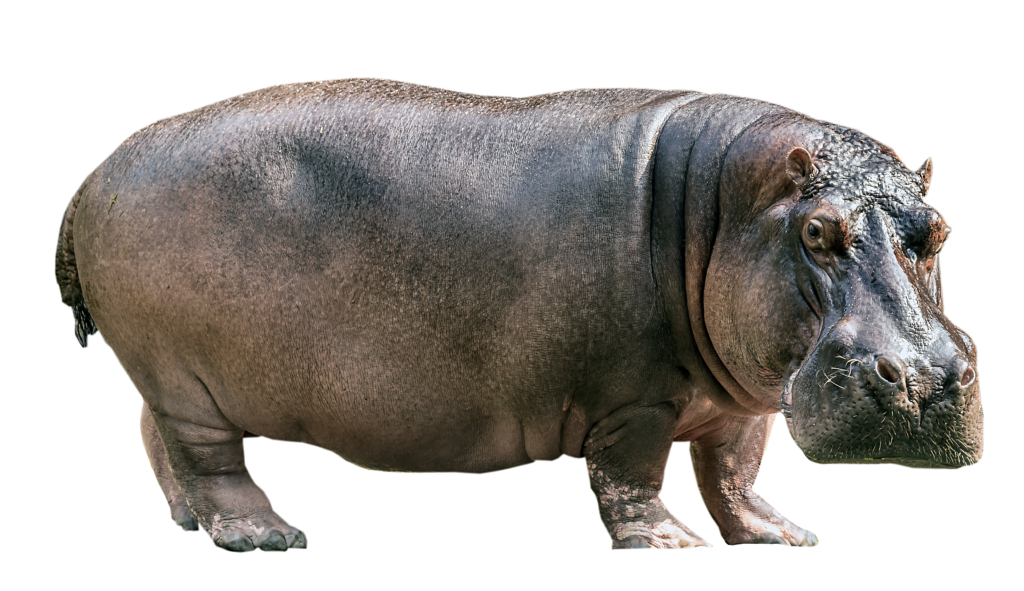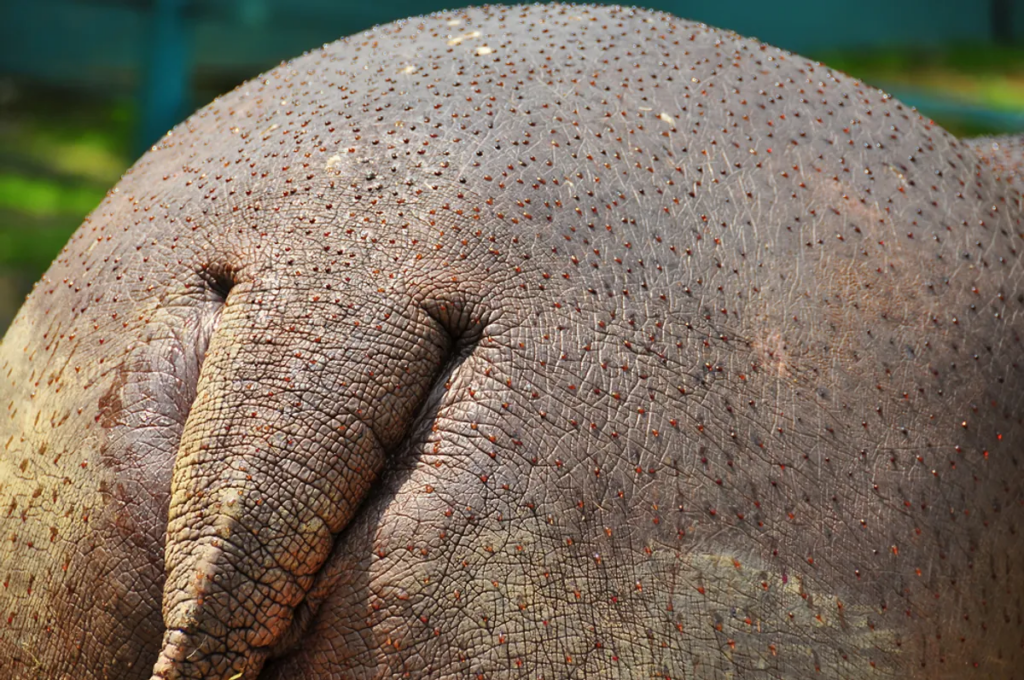History
- In ancient times, it was believed that the sweat of the hippopotamus (Hippopotamus amphibius), which appears red when exposed to full sunlight, consisted of blood, leading the first European discoverers in Africa to call it blood sweat.
- “Hippo sweat looks so much like blood, in fact, that it gave rise to a strange legend: that hippos deliberately injure themselves in times of duress. According to ancient Egyptian lore, when hippos near the Nile River got too fat or felt ill, they would pierce themselves on reeds, opening veins to let blood flow out. And for whatever reason—perhaps these hippos emerged looking healthier or more robust—Egyptian doctors decided there must be something to this practice and started prescribing it for their human patients. The Western world inherited this treatment as bloodletting, which persisted in mainstream medicine until the 1800s. In this way a simple misinterpretation in natural history gave rise to one of the most widespread—and useless—medical practices of all time.”1
- “Naturalists say that the inventor of phlebotomy was the hippo, an animal that lives on the Nile river, as big as a Frisian horse, of both earthly and aquatic nature; when it feels heavy for the excessive quantity of blood in its body, it goes into a reed bed or a similar place and under the push of a natural instinct he cuts its veins and lets blood out until it feels better. Then the hippo finds out some mud and patches up its wounds”. Taken from the Italian surgeon Tarduccio Salvi da Macerata’s bloodletting manual, which was first published in 1613, the 1650 edition of the book is accompanied by this eloquent illustration (Il ministro del medico, Rome, 1650, p. 4).2
Fun facts
- Hippopotamus is Greek for “river horse”.
- They are a semiaquatic mammal found in sub-Saharan Africa.
- Hippos can hold their breath for up to five minutes underwater.
- They spend their days in the water where they remain cool, but emerge at dusk to feed on grasses and other vegetation. Grazing until dawn, a hippo may eat up to 150 pounds (68 kilograms) of grass a night.3
- Closest living relatives are cetaceans (whales, dolphins, porpoises), from which they diverged about 55 million years ago.
- They are the third-largest living land mammal, after elephants and white rhinos.
- The mean adult weight is around 1,500 kg for bulls and 1,365 kg for cows.
- The hippopotamus has a bulky body on stumpy legs (large barrel-shaped body), an enormous head, a short tail, and four toes on each foot.4
- The jaw hinge allows the animal to open its mouth at almost 180°.
- Lifespan is typically 40 to 50 years.

Skin
- Hippo skin is very thick (about 2 inches thick across much of its body) that is:5
- Almost hairless except for the thick bristle-like hair on their heads and tails
- Light brown to dark grey, almost black, growing progressively lighter in colour as one approaches the belly which is pink.
- Very sensitive to both drying and sunburn.
- The expected weight of the skin in such an animal is 270 kg., i.e. about 18 per cent of the total body weight (compared with 6.7 per cent in the human).6
- Subdermal glands are an outstanding feature of the skin.7
Subdermal glands

- Anatomy/histology:8
- These vary in number per unit surface area with age and size, as well as over different surfaces of the body; in a large adult they are usually spaced 2-3 cm. apart.9
- They empty through ducts clearly visible to the naked eye.10
- The secretion is:11
- Always slimy
- Colorless or of varying shades of pink to red or dark brown.12
- Sebaceous glands have not been reported in hippos.
- Biochemistry:
- The fluid secreted by the subdermal is not strictly sweat as it is produced by the subdermal glands.
- Secretion contain two pigments (non-benzenoid aromatic compounds):
- The isolated pigments are highly unstable, but when they dry on the skin surface in the presence of mucus they maintain their colour for several hours before they polymerize into brown solids. Within a few minutes of perspiration, the colorless, viscous sweat of the hippopotamus gradually turns red, and then brown as the pigment polymerizes.15

Conclusion
Hippo skin secretes a natural, red-coloured sunscreen substance that is sometimes referred to as “blood sweat” but is neither blood nor sweat. Rather it acts as an antiseptic sunscreen.



